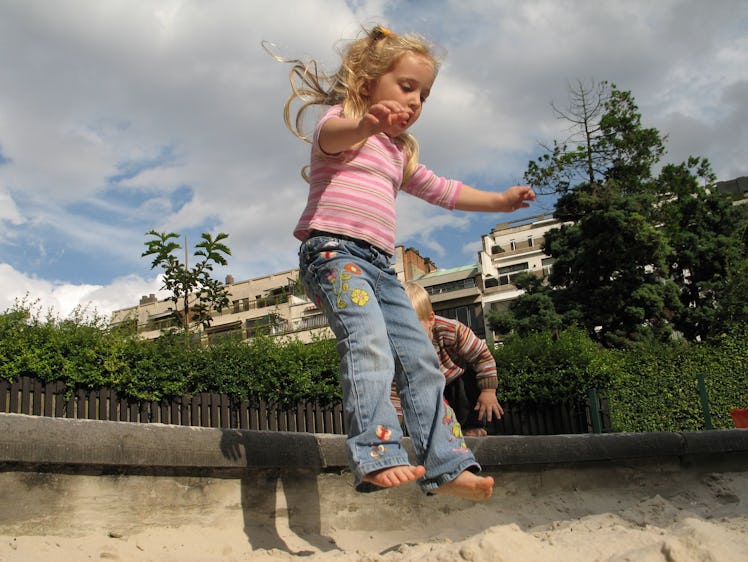Proof That The Playground Sandbox Is Full Of Things You Don’t Want On Your Kid
Exit, Sandman.

If you suspected that a sandbox was just a socially acceptable litter box, then congratulations on your instincts. In 2008, public health testing organization NSF International found that sandboxes contained 2,000 times the amount of bacteria, yeast, and mold as the door handle of a public restroom. Presumably, you wouldn’t let your kid play in a box of rest stop bathroom doorknobs, even if all the other kids were doing it.
Raccoons, feral cats and other animals who carry parasitic germs treat sandboxes like their own personal porta potties. Baylisascaris procyonis, a roundworm found in raccoon feces (Junior’s favorite!), can infect their brain and spinal cord, eyes or other organs. Dogs and cats carry roundworms as well that contain Toxocariasis, another parasite that’s only slightly easier to say but way easier to get. According to researchers, it’s the most common human parasitic worm infection. Toxoplasmosis, another parasite found in cat feces (and subsequently, sandboxes), might be less mainstream, but it has been linked to schizophrenia in past studies. That’s one bad box.
As much as you don’t want to be one of those germaphobic parents, you might not want to bury your head in the sand on this one (you know, because there’s so much shit in there). Still, if you’re set on giving your kid the same sandy childhood you had, then make sure the box is cleaned out regularly and covered at night. Otherwise, the only thing you’ll be missing is a youngster tracking animal feces-filled sand in your house. On top of having healthy kid, that’s a pretty good deal.
[H/T] CBS News
This article was originally published on